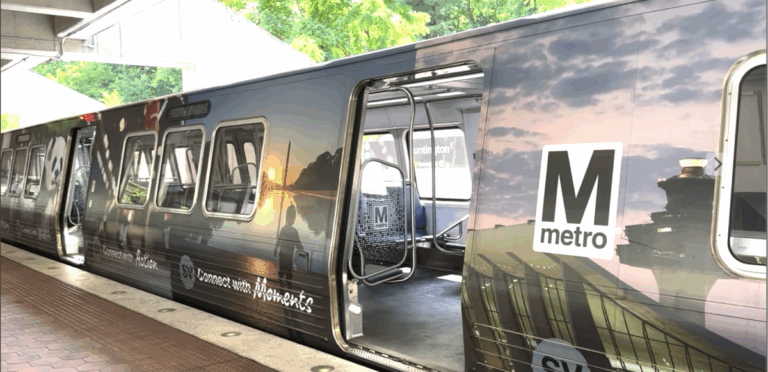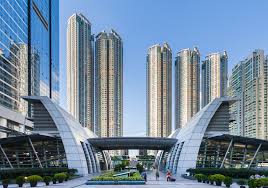Physical Address
304 North Cardinal St.
Dorchester Center, MA 02124
Physical Address
304 North Cardinal St.
Dorchester Center, MA 02124

Colleges are the perfect place for walkable neighborhoods, yet many colleges don’t focus on Transit Oriented Development. The Purple line going through the University of Maryland is a key expansion point for the D.C metro and will allow greater connections…
“Renting in Providence puts city councilors in precarious situations.” That was the Providence Journal’s leading headline a few days ago, as the legislature waited for Governor Daniel McKee to sign a pile of housing-related bills (Update: He signed them all). Rhode Island doesn’t have a superstar city to garner headlines, but it’s housing costs have mounted as growth has crawled to a standstill. But unlike in Montana and Washington, Rhode Island’s were largely procedural, aiming to lubricate the the gears of its existing institutions rather than directly preempting local regulations. House Speaker Joseph Shekarchi (D-Warwick), who championed the reforms, clearly drew on his professional expertise as a zoning attorney to identify areas for procedural streamlining. Specific and objective Six bills transmitted to the governor cover the general rules affecting most Rhode Island zoning procedures: S 1032 makes it easier to acquire discretionary development permission. Municipalities cannot enforce regulations that make it near-impossible to build on legacy lots that do not meet current regulatory standards. Municipalities can more quickly issue variances and modifications. (Rhode Island draws a unique distinction between minor and substantial variances, labeling the former “modifications” and subjecting them to a simpler process. A substantial variance must go before a board for approval; a modification can be approved administratively unless a neighbor objects. Municipalities must issue “specific and objective” criteria for “special use permits”, otherwise those use are automatically allowed as of right. That phrase – specific and objective – shows up again and again in Speaker Shekarchi’s bills. S 1033 requires that zoning be updated to match a municipality’s own Comprehensive Plan within 18 months of a new plan’s adoption. It also requires an annually updated “strategic plan” for each municipality, although the content and legal force of the strategic plans are unclear to me. S 1034 broadly […]
Last week, Nick Josefowitz unseated a multi-decade incumbent for a spot on the BART board of directors. Normally I don’t pay too much attention to elections, but Mr. Josefowitz might actually have some good ideas. For everyone outside the Bay Area, the BART (Bay Area Rapid Transit) system is a commuter rail line that constitutes the vital transportation link between the East Bay and San Francisco. On a typical weekday it provides 400,000 rides and that number is increasing as the regional economy continues to boom. Suffice it to say that BART is a big deal to a lot of people who rely on it every day (myself included). While Josefowitz’s campaign website talks about cleaning up dirty stations and increasing late night train availability, I had the privilege of hearing him outline an interesting proposal during a private, small group discussion some months ago. According to Josefowitz, BART sits on a substantial amount of real estate in the form of station parking lots. His proposal was to repurpose some of this space as high density housing. This would help with the region’s housing shortage and support BART ridership by clustering population around the system’s stations and the lost spots could be offset by building parking structures on the remaining lot space (many BART parking lots are ground level only as opposed to multi-level parking structures). This sounded a lot like Hong Kong’s integrated rail-property development approach which has proven to be an unqualified success, so my interest was definitely piqued. As always, there’s plenty of which to be skeptical. The fact that the proposal was brought up in a private discussion, but isn’t listed on the campaign website may say something about where it falls in Josefowitz’s priorities. Also, it’s difficult to tell how effective the incoming director will be […]

Integrating rail and property development is the cornerstone of the MTR’s success. In the U.S., coordination between transit authorities and developers tends to be mediocre at best. In Hong Kong, however, the MTR is both the transit authority as well as the property owner, and this makes all the difference. Coordination Problem Most attempts at transit-oriented development in the U.S. involve multi-party negotiations. The agency responsible for the transportation system haggles with different developers interested in undertaking projects along the line. Instead of implementing a unified plan, the transit agency has to negotiate specific agreements with each developer. And, because the priorities of the transit agency and the developers are never perfectly aligned, development agreements become subject to second-best compromises. Further, any disputes that arise once significant capital has been committed are costly to resolve. This arrangement makes leveraging land values difficult as well. Developers frequently get tax breaks as an incentive to undertake projects. Whether abatements on property tax or straight-forward rate reductions, tax incentives typically preclude the use of land values to help fund transit. And, even without special incentives, major property owners who stand to benefit from proximity to a transit system have every reason to resist tax increases of any kind if there’s a chance of free-riding. The MTR, on the other hand, uses the integrated rail-property development approach which combines the two roles of landlord and transit developer. The MTR owns the right-of-way as well as the surrounding properties. This removes the necessity of extended negotiations, having to settle for second best solutions, and the potential downside of disagreements partway through a project. By combining the functions of landlord and transit developer, the MTR is also able to internalize land values. The rail line drives up the value of the MTR’s properties and that value covers […]

Need to get 4 million people to the office every day? Hong Kong has you covered. The Mass Transit Railway (MTR) is a rail system in the city of Hong Kong, currently managed by the Mass Transit Railway Corporation Limited (MTRL). The system opened in 1979 and now operates over 135 miles of track as well as more than 152 stations in Hong Kong. The average trip costs somewhere between .50 cents and $3 USD, and the system makes back 186% of its operational costs on fares alone. Much of the system’s success can be attributed to urban density. Denser development means people live, work, and play in smaller geographic areas, meaning that more people are travelling between a fewer number of points. This is a huge plus for a fixed-route system like a railway. The MTR, however, hasn’t been a passive beneficiary of its environment. The MTR owns real estate around each station in the system and integrates rail and property planning so that the development of one supports the development of the other. Construction around each MTR station is incredibly dense, so it can put as many potential riders as close to a station as possible. Over 41% of the population in Hong Kong (2.78 million people) lives within a half-mile of a station. Additionally, the company’s real estate strategy emphasizes walkability; some residents of MTR owned properties can walk from their homes to a station entrance without ever even going outdoors. Clustering potential riders around each station–and making sure passengers have an easy time getting there–helps support high levels of ridership. While fares cover the costs of operations, it’s really property development that pays for maintenance and expansion. The rail line, in turn, increases the property values of parcels adjacent to each station. This augments the land […]
Apologies to everyone for the light posting – over the next few weeks I may be a bit busy with job and internship applications (any suggestions for work or job offers would be very much appreciated!), but hopefully I’ll still be able to put up a few posts a week. But for now, all you get is this mammoth link dump: 1. Vancouver’s laneway housing program (which we discussed earlier) has been off to a brisk start, and though planners are looking to liberalize sewer rules, they’re also considering only allowing one-story houses as-of-right, and limiting the amount of new laneway houses per block. 2. Former Market Urbanism contributer Sandy Ikeda writes about the urban origins of liberty at the Freeman. 3. The Dukakis Center has released a report suggesting that the gentrification caused by new light rail lines might cause driving to increase, defeating the purpose of TOD. Megan McArdle has also been discussing gentrification. Hopefully I’ll write something about this and gentrification more generally soon, but I wanted to post this in case I don’t get around to it. Any thoughts from the commenters on why this is and how it can be avoided? 4. North Korea “declare[s] war” on its version of the jitney, the “servi-cha.” 5. LA is the only big city in America whose fire department mandates that all skyscrapers have flat roofs so as to allow helicopters to land, but this may be changing (Curbed, parts 1 and 2). 6. Disabled riders file a class-action lawsuit against NYC’s MTA “for not spending a federally mandated 20% of [subway] station rehabilitation budgets on improvements like elevators and ramps.” The ADA’s impact on mass transit and urbanism is something that I’d eventually like to discuss more in depth, but I haven’t seen much research or even many […]